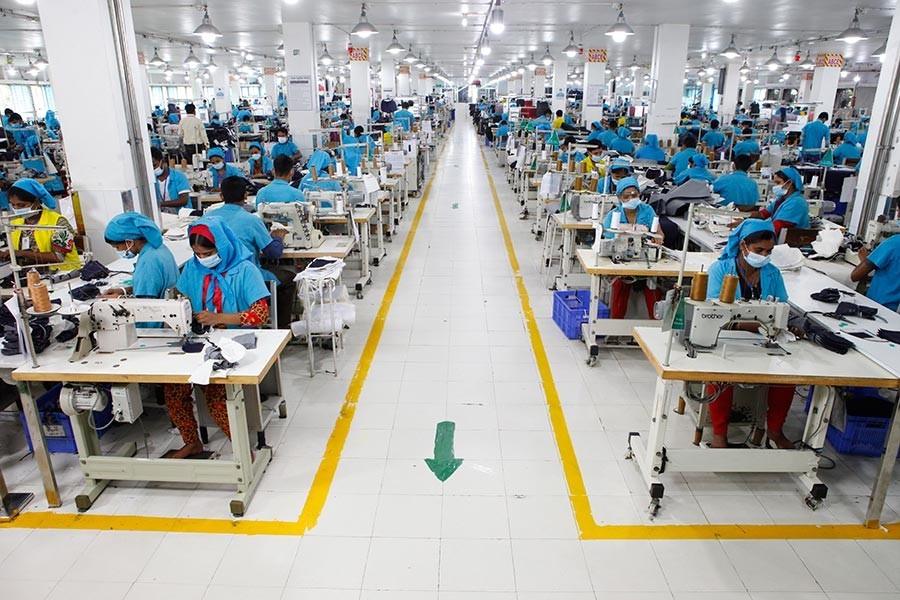Lingerie has now become one of the major export items of the readymade garment (RMG) basket, with the earnings from its export exceeding the billion-dollar mark, industry people said.
Exporters have set their sights on this value-added product to maximise their earnings amid growing demand for it, they said.
In fiscal year (FY) 2017-18, the export earnings from lingerie items -- women's innerwear and nightwear -- stood at $1.15 billion, up 7.84 per cent from the previous fiscal year.
The figure for FY 2016-17 was $1.07 billion, according to the Export Promotion Bureau (EBP) data.
The total export volume in the RMG sector was $30.66 billion in the just concluded fiscal year.
Presently, trousers are the top garment item that fetched the highest amount of foreign currency, followed by T-shirt, jackets, sweater and shirts, sources said.
These five items accounted for nearly 75 per cent of the total export earnings from the RMG sector, according to the Bangladesh Garment Manufacturers and Exporters Association (BGMEA).
Local manufacturers are now making fresh investments in this segment as they try to grab a bigger share of the global market, industry insiders said.
The prospect of orders coming in a large number following a rise in the cost of manufacturing apparel in China has made the local investors hopeful, they said.
To add more value added products to the export list, dozens of garment factories have started manufacturing lingerie in the last few years, contributing to the rise in export volume, sources said.
Lingerie is a complicated and technical product that needs a sophisticated design with right fabric and tailoring to yield a good and satisfactory fit, said Md Syful Alam, manager, merchandising and marketing, at Yunusco Bangladesh Ltd.
"That is why we call the items engineering industrial garments," he told the FE.
The company located in Adamjee Export Processing Zone at Narayanganj has 99 lines to produce lingerie items.
China and Sri Lanka have the right expertise but the cost of production has been shooting up in China, Alam said.
As local entrepreneurs have already demonstrated their expertise in the segment in the last one decade, buyers are now showing interest to source such items from Bangladesh, he added.
Besides, buyers who have already been sourcing other garment items now want Bangladesh, well known as a garment-producing country ensuring quality and lead time, to produce lingerie, he explained.
According to the company's official website, Yunusco Group produces kids wear, men's wear and women's wear, including bra and panty.
The factory operates at 40 per cent of capacity, churning out 2.0 million pieces of bra and panty a month.
The Knit Concern is another specialised production facility of lingerie items.
Equipped with 330 specialised brand machines, the company can produce about 25,000 pieces of lingerie a day, according to its officials.
The demand for lingerie items has been growing day by day, said Mohammad Hatem, managing director of MB Knit Fashion Ltd.
"In my factory, two lines will be dedicated to producing lingerie items within 10 or 12 days, as one of my EU buyers has shown keen interest to get such items," he said.
Mr Hatem, also the vice president of Exporters Association of Bangladesh (EAB), said Bangladesh has a huge potential to earn foreign currency from the export of value added and diversified garment items and lingerie is one of them.


